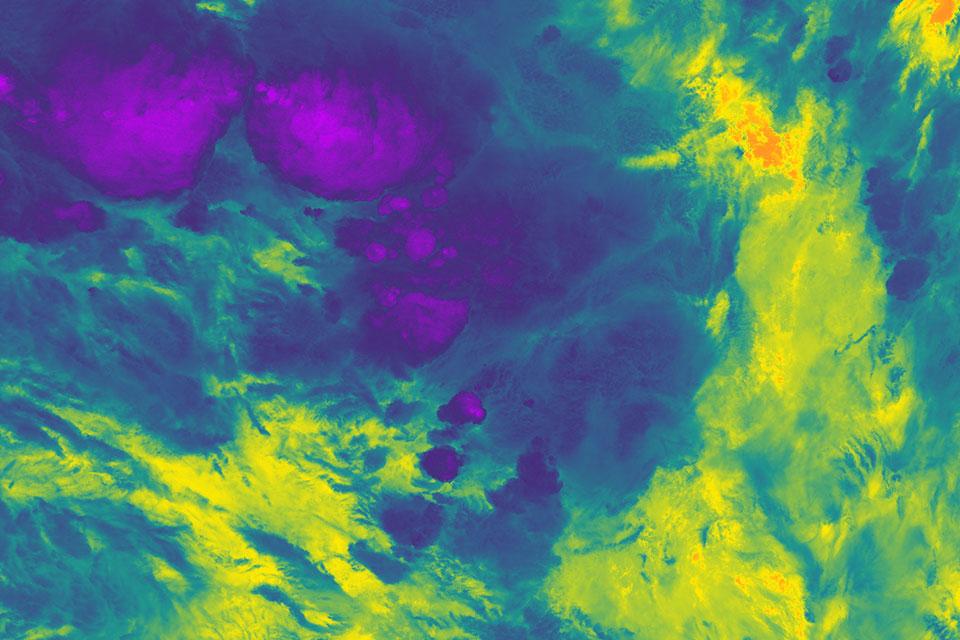A new paper led by Dr Simon Proud, research fellow at the Department of Physics and the National Centre for Earth Observation, describes a unprecedentedly cold temperature measured atop a severe thunderstorm cloud in the Pacific by an Earth-orbiting satellite. This temperature of -111°C is more than 30°C colder than typical storm clouds and is the coldest known measurement of storm cloud temperature.
Issuing severe weather warnings
In the lowest section of the Earth’s atmosphere, known as the troposphere, air temperature decreases with altitude and can reach as low as -90°C in the tropics. Thunderstorms and tropical cyclones can grow to high altitudes, up to 18km (11mi), and therefore the tops of these storm clouds become extremely cold. Temperature measuring sensors aboard Earth-orbiting satellites can detect these cold clouds enabling meteorologists to monitor such storms and issue severe weather warnings.
On 29 December 2018, the VIIRS sensor aboard the American NOAA-20 satellite, overflew a severe thunderstorm in the South Western Pacific, approximately 400km South of Nauru. This storm was so powerful that it pushed through the troposphere and into the stratosphere; continuing to cool as it gained height despite the surrounding air being warmer: an event known as an overshooting top. This overshoot led to the storm cloud becoming the coldest known storm cloud temperature recorded, -111°C, and the tops of the clouds reached an altitude of over 20.5km (12.8mi) above sea level.
Pushing the limits of satellite sensors
'This storm achieved an unprecedented temperature that pushes the limits of what current satellite sensors are capable of measuring,' Dr Proud explains. 'We found that these really cold temperatures seem to be becoming more common – with the same number of extremely cold temperatures in the last 3 years as in the 13 years before that. This is important, as thunderstorms with colder clouds tend to be more extreme, and more hazardous to people on the ground due to hail, lightning and wind. We now need to understand if this increase is due to our changing climate or whether it is due to a "perfect storm" of weather conditions producing outbreaks of extreme thunderstorms in the last few years.'
The success of VIIRS in identifying these cold temperatures is due to its ability to measure on exceptionally detailed spatial scales. Co-author Scott Bachmeier, a research meteorologist at the Cooperative Institute for Meteorological Satellite Studies/Space Science and Engineering Center, University of Wisconsin-Madison, explains that 'since the coldest portion of a cold overshooting top turret can sometimes be 1 km or less, the superior spatial resolution of polar-orbiting satellite instruments (such as VIIRS and MODIS) provides a more accurate detection of the overshooting top's thermal characteristics compared to instruments carried aboard geostationary satellites' that are more commonly used for weather monitoring. Upcoming satellite missions, such as EUMETSAT’s MetOp-Second Generation, will allow even more detailed analysis of future extreme storm events.
Dr Proud’s work is supported by the Natural Environment Research Council.
The full paper is published in Geophysical Research Letters and is available via open access at: https://agupubs.onlinelibrary.wiley.com/doi/full/10.1029/2020GL092261(link is external)

